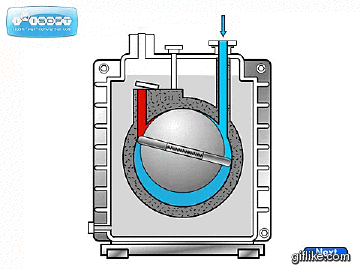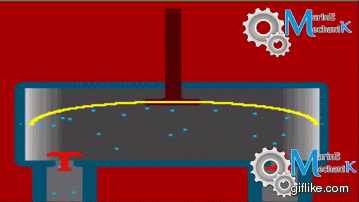Vacuum pump types
Vacuum pumps come in a number of different configurations. There are three factors that determine the type of pump you want for a given project:
- Required pressure
- Cost
- Potential for contamination
The first criteria breaks pumps down into two basic categories. Low vacuum and High vacuum.
Low vacuum – Roughing pumps
Low (also called rough) vacuum is defined as being between 760 and 25 Torr. 760 Torr is normal atmospheric pressure so low vacuum is up to 30times less pressure than normal atmosphere.
Roughing pump are pumps which deal with pressures in this range. In general these pumps can go down this far but no further. Conversely, higher vacuum pumps don’t function at such high vacuum levels. This means that in general when creating a high vacuum you first need a roughing pump to generate a low vacuum, and then can move onto a second pump which takes you from this moderate vacuum level up to a high vacuum.
It’s worth noting that the same is true for measurement tools. Some gauges operate at low vacuum only, while other operate at high vacuum only.
There are many types of roughing pump, but you’ll generally only need to know about two of them. Oil-seal pumps and dry pumps.
Oil-sealed roughing pumps
These are the most common and cheapest roughing pumps, they are suitable for a number of applications. Oiled-seal pumps are in general rotary pumps, they mechanically “squeeze” the air increasing it’s pressure and pushing it out of the pump. For this reason they also also called “compressors”. The following gif describes their operation:
Rotary pumps use oil to maintain good seals, however this makes them susceptible to “blow flow” or “back streaming”. This is when the oil gets sucked out of the pump and into the vacuum chamber, contaminating it.
Rotary pumps can be designed with multiple stages, this enables them to reach higher vacuums. Single stage pumps generally achieve ~0.1Torr, two stage pump can in some cases reach as low as 0.0007Torr.
Dry roughing pumps
Dry roughing pumps were designed to mitigate against the possibility of oil back flow. There are various kinds including rotary based designs (rotary lobe pumps). However Diaphragm pumps appear to be the most common type. As the name implies they use a diaphragm to compress the air, rather than a rotary action:
For most applications (including things like SEMs, sputtering machines) a dry pump is not required.
High vacuum pumps
If you want to generate a high vacuum, once your vacuum chamber has been roughed down using the roughing (or backing) you will start a high vacuum pump. These pumps are able to generate a higher vacuum than a roughing pump, but only will only work when the pressure in the chamber has already been reduced by a roughing pump.
Turbo Molecular pumps
The most common type of high vacuum pump is the turbo molecular pump. There operation is fundamentally quite simple, and they work on the atomic level knocking individual atoms out of the vacuum chamber. Kind of like a pinball machine:
Turbo molecular pumps operate at high speeds, and in general require dedicating controllers.
Other high vacuum pump types
While turbo molecular pumps are the most common various other high vacuum pump types exist. These include Diffusion pumps (which use jets of oil to carry molecules away), Cryo pumps (which condense and sequester the molecules), and Ion pumps (which apply a charge to stray atom and use this charge to move the atom out of the chamber .


